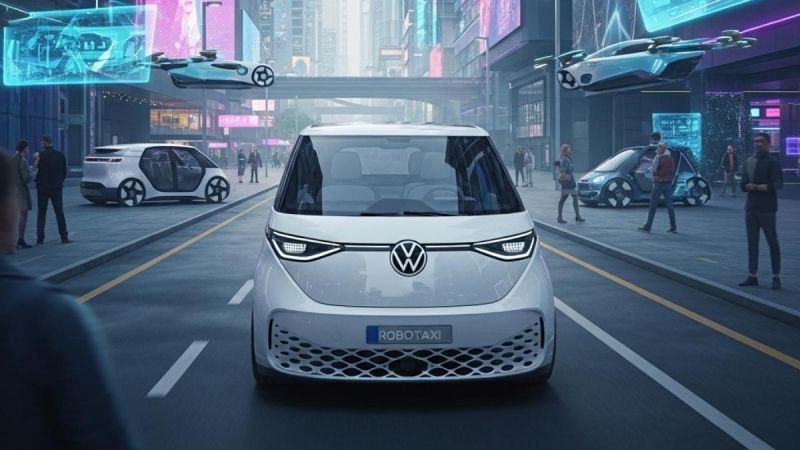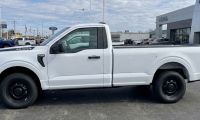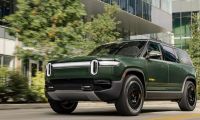The Volkswagen ID. Buzz, a charmingly retro-futuristic electric van, is poised to do more than just ferry families to the beach. It's on the front lines of a revolution that could dismantle a cornerstone of modern life: personal car ownership. Through strategic partnerships and ambitious pilot programs, VW is transforming its iconic microbus into an autonomous "taxi," a self-driving taxi service that heralds a not-so-distant future where hailing a ride is always cheaper, easier, and more logical than owning a car. This isn't just a new feature; it's the beginning of the end for the automobile as we know it, and the ripple effects will reshape our cities, our finances, and our very definition of freedom.
The Race to a Driverless Fleet
Volkswagen is not walking this path alone; it's sprinting in a pack. The company has forged a critical partnership with autonomous driving tech giant Mobileye and ride-hailing behemoth Uber to launch its autonomous ID. Buzz fleet. Pilot programs are already underway, with plans for a full commercial rollout in major US and European cities within the next couple of years. The strategy is clear: combine German engineering with Israeli AI and an American logistics network to create a scalable, driverless mobility service.
This model is rapidly becoming the industry standard. Waymo (owned by Google's parent, Alphabet) has been operating and expanding its autonomous ride-hailing service for years. Cruise, backed by GM, is aggressively pursuing the same goal despite some setbacks. The entire industry is converging on a single idea: the most valuable car is not the one sold to an individual, but the one that's part of a constantly moving, revenue-generating, autonomous network. The future isn't about selling millions of cars; it's about selling billions of rides.
Making Car Ownership Obsolete
For decades, owning a car was a rite of passage and a symbol of independence. Soon, it may be seen as a financially irrational and inconvenient relic. The math is compelling, if not yet fully realized. While some early studies suggest current robotaxi services can be more expensive than traditional ride-hailing, the long-term economic model is built on one crucial factor: removing the driver. Labor costs represent the single largest expense in any taxi or ride-share trip. Once the vehicle is a fixed, depreciating asset that can operate 24/7 (stopping only to charge), the per-mile cost plummets.
Analysts predict that the cost of using an autonomous taxi service will eventually be significantly lower than the total cost of owning a personal vehicle. Think about the expenses that disappear: car payments, insurance, fuel (or electricity), parking, and thousands of dollars in annual maintenance and repairs. Instead of a multi-thousand-dollar-per-year liability sitting idle in a driveway for 95% of its life, a user will pay a simple, low fee for the exact transportation they need, when they need it. This shift from a capital-intensive ownership model to a pay-per-use service model could save the average urban or suburban household thousands of dollars annually, freeing up disposable income and fundamentally altering household budgets.
The Unlicensed Generation
This impending economic shift is colliding with a powerful social trend: younger generations are already falling out of love with driving. For many Millennials and especially Gen Z, the car is no longer the ultimate symbol of freedom. Freedom is the smartphone in their pocket, which can summon food, entertainment, and, yes, a ride from anywhere to anywhere. Data consistently shows a significant decline in the percentage of teenagers and young adults getting driver's licenses.
They see driving not as a privilege, but as a hassle and an expense. Why deal with the stress of traffic, the cost of insurance, and the search for parking when a Lyft or Uber is just a tap away? The arrival of cheap, ubiquitous autonomous "traxis" will pour gasoline on this fire. If transportation becomes a low-cost utility, as simple and reliable as turning on a tap, the incentive to learn to drive and own a car will evaporate for a huge portion of the population, particularly those living in urban and suburban areas.
The Future of the Automotive World
The transition to Mobility-as-a-Service (MaaS) will trigger a seismic restructuring of the entire automotive industry. Companies that define themselves solely as "manufacturers" will be left behind. The new titans of the industry will be those who control the entire mobility stack: the vehicle, the autonomous driving system, and the fleet management and logistics software. This is why Ford, GM, and VW are investing billions to become mobility companies, not just car companies.
The very concept of a "car dealership" may become obsolete, replaced by fleet maintenance and charging hubs located in industrial parks. The design of vehicles will also change. When you don't own the car, the focus shifts from driver-centric features to passenger experience. Expect vehicles designed as mobile living rooms, offices, or entertainment pods. The ID. Buzz, with its spacious, flexible interior, is a perfect early example of this design philosophy. It's less about the thrill of the drive and more about the comfort and productivity of the ride.
Wrapping Up
The friendly, familiar face of the Volkswagen ID. Buzz masks a profoundly disruptive future. Its deployment as an autonomous taxi is a key indicator of a massive economic and cultural shift away from personal car ownership. This new era of autonomous mobility promises to be cheaper, more convenient, and more efficient, aligning perfectly with the priorities of younger generations who have already begun to untether themselves from the driver's seat. While the road ahead will have regulatory bumps and technical challenges, the destination is becoming clear. We are heading for a future where the driveway is empty, the garage is a relic, and our freedom of movement is managed by a fleet of intelligent, tireless robot-buses.
Disclosure: Image rendered by Gemini
Rob Enderle is a technology analyst at Torque News who covers automotive technology and battery developments. You can learn more about Rob on Wikipedia and follow his articles on Forbes, X, and LinkedIn.











